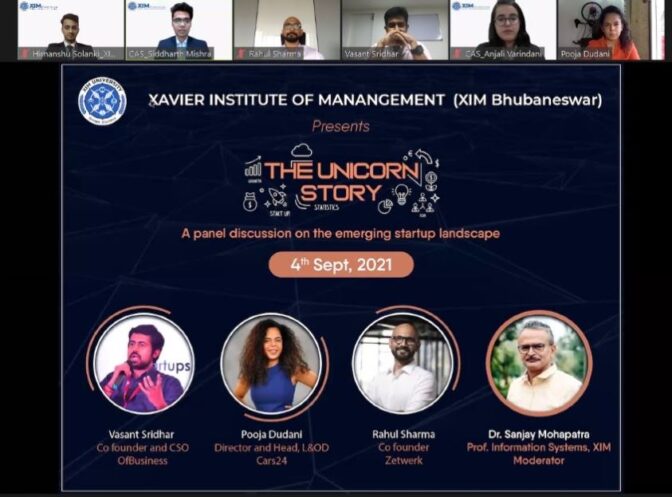“If you owe your bank a hundred pounds, you have a problem. But if you owe a million, it has.” ― John Maynard Keynes
The Indian banks are the major mediators of finance in the country and the R.B.I. depends on them for much of the implementation of its policies and regulation of credit control. The Indian economy is thus largely dependent on and dominated by its Banking sector, predominantly among which the Public sector banks hold a major stake and leverage on the prioritized agriculture sector, industrial sector covering a wide range of massive units from Iron and steel, Power Industries, Coal to textile and aviation down the line to the non-priority sector. The matter of such an important and fundamental sector facing problems of deteriorating asset quality and increasing Non-performing assets (NPAs) is thus of serious concern and gravity requiring a look at “What is wrong with Banks?”
To understand and answer this question, let a layman be known about NPAs and how they are produced. Investopedia defines NPA as “A debt obligation where the borrower has not paid any previously agreed upon interest and principal repayments to the designated lender for an extended period of time”. Presently, this extended period is of 90 days and since the asset hence becomes unprofitable and ceases to produce any income, it is referred to as Non-Performing. The deterioration of asset quality and creation of NPAs thus results from bad loans and debt concerning borrowers who have themselves turned unyielding. Now since the money that banks use to advance these loans is not their own but public money, the bank lending becomes increasingly skewed. The banks thus have to deal with the NPAs through the profit they make and hence overall profitability suffers. This, in turn results in harsh measures by the banks making the overall credit/debit procedure difficult and cumbersome.
The reasons for the problem are thus cyclic and multi-dimensional in nature. It is thus not possible to point out the conditions under which a said credit was sanctioned and how the appraisal for the concerned project was carried out. Nor is it possible to monitor individually the reasons that might have led to the projects becoming unprofitable or failing. However, a macro-economic analysis for the same can be carried out concentrating our focus on large scale borrowers and problems with these economic sectors. Also, the impact of global economic changes on small and big projects and ventures as a whole can be estimated and a general perusal can be carried out for the same.
The latter part of the previous decade witnessed a weak overall economic expansion and a financial crisis that hit the world economy during 2008. As such, the asset quality of banks suffered. A weak macro environment, high inflation and vulnerability of a large number of infrastructural projects in India has bore damages on the asset quality. Policy paralysis still remains a compelling factor. To top it all, pressure from aforementioned infrastructural industries, Construction and Engineering and coal sector has further aggravated the situation, a recent example being slipping of stocks of SBI due to Supreme Court verdict on coal block scam(To know more about it, click here. Going by Moody’s Research, poor financial profiles of state electricity board distribution companies (discoms) is a key source of asset quality risk. Add all this up to the sluggish profitability of banks and we are looking at an estimated PSB gross NPAs of 4.4-4.7% as on March 31,2015,as against 4.4% as on March 31,2014. This condition of PSBs is far depressing than private sector banks. Of course it cannot be neglected that PSBs are under some pressure from RBI to provide even risky loans in the name of social developments; but another reason is that the recovery and credit mechanism of PSBs is ineffective compared to private banks. The procedure followed in extending and monitoring credit is another contrasting factor.
Certain measures of immediate and long term applicability must thus be taken to tackle the problem. Infrastructural issues must be addressed and stuck projects revived. Fundamental structural reforms need to be brought about in discoms. The RBI has hitherto depended on Sale of NPAs to Asset reconstruction companies to reduce reported stress; for this, the RBI prescribed Security Receipts have to be loosened so that write down and portfolio selloffs is boosted. At the same time, since the ratio of restructured assets to gross advances is already 5.9 per cent, rudimentary alternatives to solution of the problem via asset reconstruction becomes imminent. The subjection of Public Sector Banks to fragile and ill structured sectors should be reduced. Restructuring of loans and advances by banks should be fostered to contain the deterioration in asset quality. However, the inherent risks due to restructuring in the long run need to be monitored and controlled. Loan advancement to potentially sick units should be checked by close monitoring of financial status and loan accounts of the borrower. With the introduction of Pradhan Mantri Jan Dhan Yojana, which aims to open 75 million accounts in five months, the banks are experiencing heavy stress on their already short personnel which might badly affect the potential of providing the suitable manpower addressing bad loans and their recuperation. The RBI Governor Raghuram Rajan needs to take his theory of Credit Discipline in the true spirit in regard to loans and loan waiver.
All in all, the issue at hand is grave; Much is wrong with the banks and there is need to address the problem in right earnest.
Tags: Asset quality banking coalgate IndiaYou might like reading:

The Unicorn Story – Business Conclave at XIM Bhubaneswar
‘Everyone can tell you the risk, an entrepreneur can see the reward’ On September 4, 2021, Xavier Institute of Management Bhubaneswar hosted a one-of-a-kind event, “The Unicorn Story – a panel discussion on the emerging start-up landscape”. Eminent business leaders from three of India’s emerging unicorns graced the event with their presence. Rahul Sharma, Co-Founder of Zetwerk, Vasant Shridhar, Co-Founder […]

Marketing Strategy of Kinley- Connecting with customers through Trust
Water is the basic necessity of human beings and the increasing health awareness and scarcity has led to the development of mineral water industry in India. In 1999, the total annual bottled water consumption in the country was 1.5 billion litres and the market was growing at compound annual growth rate (CAGR) of 25%. Coca-Cola entered this market with its […]
































good read
Another gem 🙂
Thanks Abhirup…More to come surely and soon